June 19, 2025 | 08:18 GMT +7
June 19, 2025 | 08:18 GMT +7
Hotline: 0913.378.918
June 19, 2025 | 08:18 GMT +7
Hotline: 0913.378.918
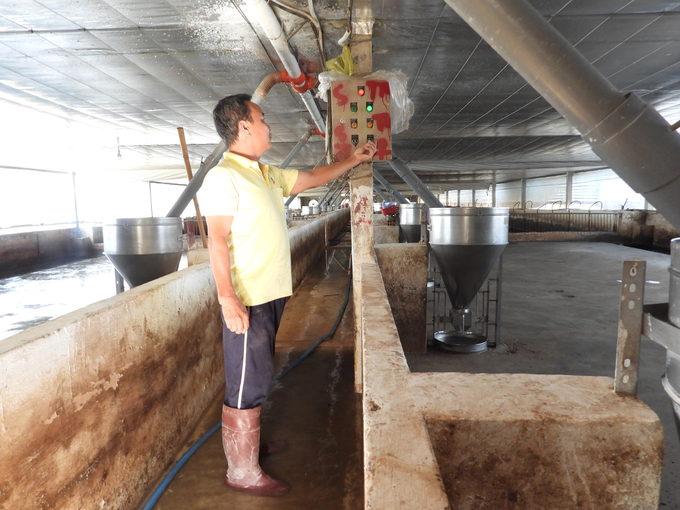
Since 2008, Binh Phuoc has planned to develop livestock in the direction of modern industry and gradually reduce small-scale livestock production. Photo: Phuc Lap.
Small and scattered livestock production is no longer suitable in the current context as many diseases have appeared, demanding higher environmental and food safety standards.
Therefore, the relocation of small livestock establishments in areas where livestock are not allowed in cities, towns, townships and residential areas is an inevitable trend. While many localities are struggling to implement relocation plans, Binh Phuoc has implemented it very early and confidently anticipates the relocation trend.
According to the Binh Phuoc Department of Agriculture and Rural Development, in April 2021, after the Government's Decree No. 13/2020/ND-CP detailing the Law on Livestock came into effect, the total local pig herd increases to over 1,457,000 pigs, by June 2023 the whole province has nearly 2 million pigs, with an estimated meat output of 250,000 tons. This makes Binh Phuoc the province with the fastest herd growth in the country.
Notably, the rate of livestock production by farm accounts for over 93%. Most of the farms in Binh Phuoc have decided to apply high technology and automate all production stages closely from input to output. Consequently, this creates value chains or joins product chain links.
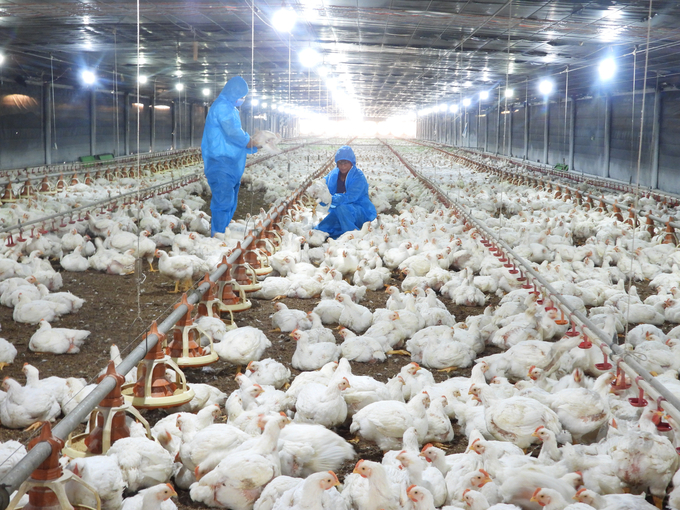
The chain of chicken farming is concentrated in Binh Phuoc. Photo: Tran Trung.
Mr. Tran Van Phuong, Deputy Director of Binh Phuoc Department of Agriculture and Rural Development, said that in order to get the results like today, the whole process of policy formulation, planning, and development strategy has to be precise from the beginning of the province.
Besides the advantage of having a sizeable clean land fund, Binh Phuoc has gradually improved the transportation system, developed industrial, commercial, service, infrastructure, and implemented many preferential policies to attract investment. Consequently, this creates momentum for agriculture in general, and livestock industry in particular.
First of all, since 2008 Binh Phuoc has planned to develop livestock in the direction of modern industry and gradually reduce small-scale livestock production. Secondly, the province has also issued policies to attract development investment, in which there is the livestock sector. The province has also promoted investment promotion, supported infrastructure such as electricity lines to livestock areas and provided quick support in investment procedures, promptly communicate with businesses, remove difficulties and obstacles in the spirit of being for business and accompanying businesses.
At the same time, the province also pays keen attention to building and organizing the implementation of prevention programs and plans in order to prevent plagues to ensure a stable epidemic state. Businesses can rest assured to invest in livestock in the province.
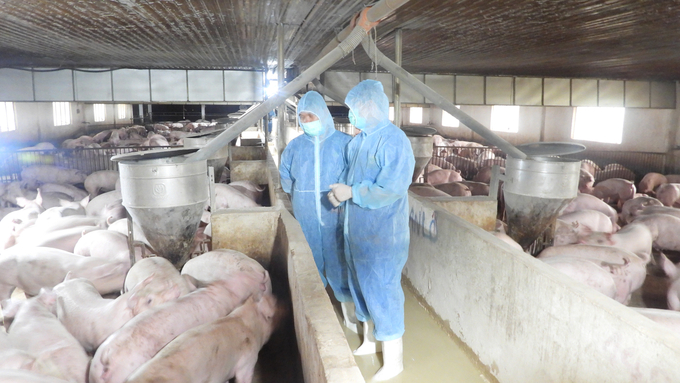
Most of the farms apply high technology and automate all stages closely from input to output, creating value chains. Photo: Phuc Lap.
According to Mr. Tran Van Phuong, the most outstanding result is that Binh Phuoc's livestock industry is currently developing in the right direction of industrial animal husbandry with modern technology and chained production. Accordingly, Binh Phuoc has also attracted about VND 24,000 billion in livestock production with about 150 large businesses and leading livestock corporations coming to invest.
Specifically, 4/6 projects of animal feed factories with a capacity of 2.3 million tons/year have come into operation. Binh Phuoc also formed a number of production linkage chains, creating safe livestock products. For example, a chain of safe pork and chicken for export with an investment scale of over $230 million.
In orientation for livestock development in the coming time, Binh Phuoc sets a target that by 2025, the total pig herd will be over 2.7 million, the poultry herd will be over 18 million, the herd of buffaloes and cows will be over 60,000; By 2030, the pig herd will be over 3.2 million, the poultry herd will be over 27 million, and the buffalo herd will be over 70,000.
“One of the overarching solutions is to promote the construction of disease-free zones. According to the province's plan, by 2030, Binh Phuoc province will successfully build a disease-free cattle and poultry breeding area that meets export conditions. Binh Phuoc strives to become a centre for exporting animals and animal products of the whole country”, emphasized Mr. Tran Van Phuong.
Translated by Hoang Duy
/2025/06/17/3942-2-143243_548.jpg)
(VAN) Recently, in Sweden, the Secretary of the Binh Dinh Provincial Party Committee presented the Investment Registration Certificate for the 'Polyester Fabric Recycling Complex' project to SYRE Impact-AB Company.
/2025/06/12/3721-2-202745_83.jpg)
(VAN) TH made an impression at Seoul Food 2025 with its line of natural beverages, paving the way for Vietnamese food products to enter the South Korean market.
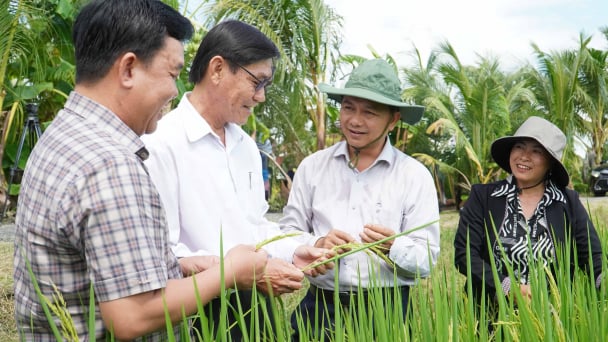
(VAN) Soc Trang's success in rice exports stems from a strategy of developing fragrant and specialty rice cultivation areas and standardizing production toward low-emission practices.
/2025/06/11/1311-5-120811_839.jpg)
(VAN) The pig farming industry is facing the challenge of comprehensive restructuring to meet requirements for quality, safety, traceability, and market expansion both domestically and for export.

(VAN) Vietnam considers participating in ALGROALBA in order to expand agricultural production, coordinate the assessment and effective exploitation potential land.
/2025/06/05/5314-1-184727_407.jpg)
(VAN) From seemingly worthless fish scales and skin, enzymes and lactic ferments can transform by-products into peptides, opening a sustainable, effective business direction and elevating Vietnamese seafood.
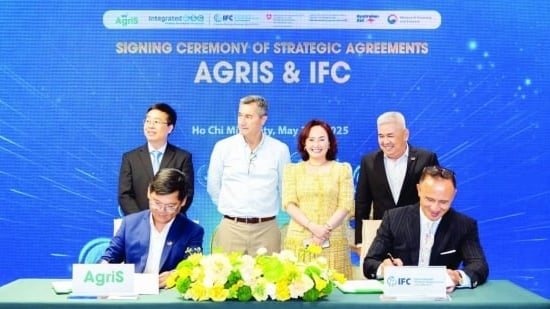
(VAN) TTC AgriS and IFC signed a strategic partnership to develop a sustainable agricultural value chain, aiming to achieve the Net Zero target by 2035.